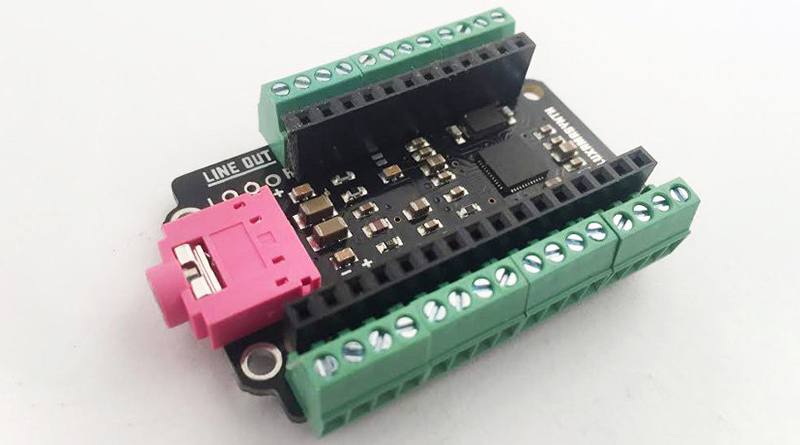There are only so many ways to generate music with a computer, and by far the most popular method is MIDI. It’s been around for thirty-five years, and you don’t get to be a decades-old standard for no reason. That said, turning MIDI into audio is a pain, but this project in the Musical Instrument Challenge for the Hackaday Prize makes it easy. It’s a Fluxamasynth Module that turns MIDI into something you can hear.
The key to this build is a single chip that takes MIDI data in and spits out audio, according to the 128 general MIDI sounds. This might not sound like much, but if you’ve ever tried to turn MIDI into sound, you’ll find your options are limited. There is exactly one chip that can do this and is easily obtainable: the SAM2695 from Dream Sound Synthesis. This chip was originally designed for cheap toy keyboards, but if you have a chip, you can do anything with it.
The Fluxamasynth Modules are inspired by the original Fluxamasynth, an Arduino shield that is basically a breakout board for the SAM chip. There’s a MIDI in, and an 1/8″ jack for output, and not much else. The Fluxamasynth Modules extend the capability by adding more support, including stereo output, reverb, chorus, flange, and delay effects, and digs down deep into the configurable parameters for tuning.
The hardware is basically an audio appliance for the Arduino, Raspberry Pi, and the ESP32, and allows for generative music through code. You can see an example of this project in the video below.




















How many notes to you think it can play at once?
64 without fx, 38 with fx. actually pretty stout.
Oof, that QFN Package though… On a whim I looked to see if anyone made sockets for those – they do, but they’re like $100.
QFNs are easier to solder than QFPs. They register on pad and auto-center better with solder surface tension than most parts. Just be generous with flux, pre-tin the pads a little, and use hot-air – cake…
absolutely, the foear of qfn by hand isn’t really justified. Even with an iron and w/o hot air : plenty of flux, good first tacking and it works.
Not to be evil Dr. Pentanto, but despite creative labs old marketing, wavetables are something else. See Waldorf wave or blofeld or ensoniq fizmo. .. this appears to be a rompler aka sample playback.
It’s hard to call a table of waveforms much else! But yeah. The computer world and the synth world mean two different things by “wavetable”.
I’m not 100% sure that new-age hippies and nuclear physicists mean the same thing by “energy” either…
Good gravy, wouldn’t that be fun if they converged?
The functionality you are talking about (table (or rather a collection actually) of waveforms acting as a general MIDI synth) is probably closer to rompler-functionality. Calling it ‘wavetable’ is a complete disregard of the nomenclature. The implied functionality of a wavetable is that an oscillator looks up the amplitude for a given phase, instead of calculating it, sometimes to save CPU, sometimes to achieve morphing capabilities, sometimes both.
Besides playing a number of music formats and MIDI files, the VS1053b also will take MIDI in and and play general MIDI with a number of voices. I doubt it’s wave table, though.
“an audio appliance for the Arduino, Raspberry Pi, and the ESP32”
Im pretty sure both the Raspberry Pi, and the ESP32 can do MIDI in software..
so this is basically an expensive DAC?
…and out-of-stock DAC, but with a MIDI interface and wavetable memory. Nicely integrated, but yes, you could do this with a small FPGA and a DAC.